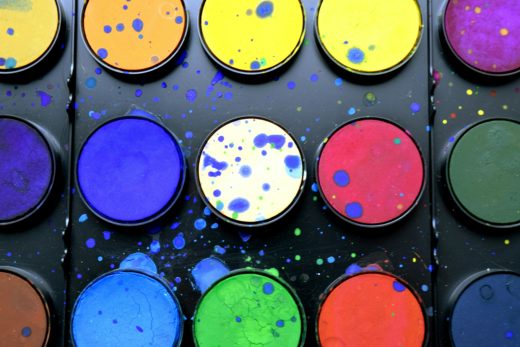
As we sidle cautiously into the warmer months of the year, when both production and equipment companies are busiest, it’s easy for a degree of cynicism to creep in as the promotional emails start to pile up. In some ways, manufacturers victims of our own success; cameras and lights are now so good it’s easy to think of them as a won war.
Look a bit closer, though, and we might prefer not to congratulate ourselves prematurely.
Consider. We’d be forgiven for concluding that it’s impossible for movie lights to ever be quite the right colour. Given how many cameras and displays we have to shoot and view things on, that’s perhaps understandable. What’s less understandable is that TVs can now often display colours lights can’t output. Still, it’s nothing new. Camera professionals have been griping about colour since before the invention of colour photography.
Then, and ever since, different lighting technologies have been described as having too much or not enough of more or less every colour in the spectrum. It’s almost as bad as the situation with night exteriors, which have variously been represented as very warm white (candles), bright orange (sodium vapour street lighting), blue (James Cameron), or even green, for no better reason than that we’re bored of blue. What next; purple? Oh, right.
In reality, moonlight is sunlight that’s bouncing off colourless rock, so it’s actually the same colour as daylight. Still, that’s not the sort of attitude that wins anyone a head-of-department slot on a Netflix series.
Humans don’t know
Having established that humans don’t know what colour anything is, and often have no fixed idea of what colour they even want things to be, let’s consider lights. Actors of the pre-sound era found themselves painted yellow and blue to avoid looking flat on early red-blind film. The light cast by Cooper Hewitt lamps was so off-white it was basically turquoise, an effect which was only rehabilitated from “horrifying” to “awesome” when Jarin Blaschke shot The Lighthouse through blue filters.
Cooper Hewitt’s design was revised into modern fluorescents, which are only slightly green by comparison. Cinematographers saw this as incorrigible, and the phrase “green spike” became an inaccurate catchall for colour rendering problems until Blade Runner made it cool. Or warm. Or green. Meanwhile, Osram decided that tungsten-halogen lighting didn’t include enough blue light, and invented HMIs in order to correct the situation. This was fine until LEDs came along, bringing lots of efficiency but not much red.
This looks like all the colours. Until things improve just a bit more, however, it represents merely most of the colours.We won’t be fully up to date, however, until we understand that modern LEDs don’t really lack red any more. Well, they do, since their red output doesn’t typically reach all the way down into the infrared like a tungsten bulb. They don’t have some of the deep reds which nicely illuminate the most important parts of humans. Still, it’s not a problem that’s likely to increase the makeup department’s consumables spend. If there’s a last bastion of LED colour quality, it’s something which seems likely to affect costumiers.
It’s common knowledge that many movie LEDs are blue LEDs illuminating a phosphor which turns some of the blue into other things. The Wikipedia article, for anyone who wants to be deadly at dinner parties, is “Stokes shift,” and it only goes one way: it turns bluer light into redder light, but not vice versa (in principle, there are materials which exhibit a shift in the other direction, but they’re not really suitable for building movie lights.)
The last bastion of blue
This would be fine, except that our blue LEDs are not very deep blue. There are deeper blues which are still visible light, and those are missing from pretty much every LED light ever made.
This matters, first because of collagen, which fluoresces. We’re used to thinking of skin tone rendering in terms of warmth, but it turns out humans actually are slightly dayglo. Also, laundry detergent often includes fluorescent dyes which are intended, as the commercials like us to believe, to make whites whiter. Most LEDs lack sufficiently deep-blue light to activate those dyes, leaving the wardrobe department frowning at the monitor.
Solutions are imminent. LEDs capable of deep blue light are increasingly found in products targeting the spendier end of the film lighting market. After the last century, though, we might ask whether colour quality is an unscratchable itch. Even the sun doesn’t have a completely flat spectrum, so the answer is probably no, although once we’ve fixed deep blue there’s little left. It is the last bastion of LED colour quality.
Although it’d be great if we had phosphors capable of deeper reds. And green, too – phosphor conversion leads to nicer colorimetry all round. Current green phosphors are a bit desaturated. Then the only problem is to get everyone to implement control systems that…
…yes, yes, it’s an unscratchable itch. Carry on, manufacturers. What’ve you got?
